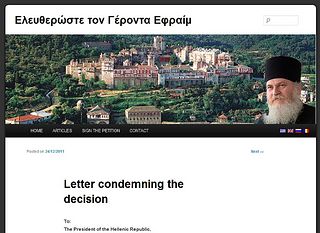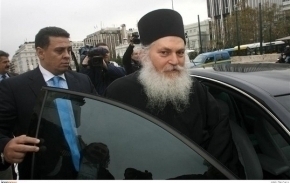Tens
of thousands of Christians in the San Fernando Valley and the rest of
Los Angeles will celebrate the most ancient Christmas Day on Thursday.
Armenians will be commemorating their Christmas, a tradition recognizing both the birth and baptism of Jesus Christ.
Also Thursday, Latinos will mark their annual Three Kings Day,
celebrating figures held in higher esteem than Santa Claus in many
immigrant communities.
Meanwhile, on Friday, Orthodox Christians - among them the
Russian, Coptic and Serbian Orthodox churches - who follow the Julian
calendar will celebrate Christmas.
So unique is the experience of this "other" Christmas that
Glendale filmmaker Ella Hatamian is about to begin shooting a short
feature detailing Armenian Christmas.
"I grew up attending Armenian schools, speaking Armenian and
in the Armenian culture, so I was always used to having my Christmas in
January," recalls Hatamian. "I always thought it was just us, but I'm
finding out that we're not alone.
"In my family, it's not as much about religion as it is about maintaining culture and tradition."
Some, in fact, regard the Jan. 6 and 7 commemorations as part of a doubly rich Christmas cultural experience.
"In my family we recognize Jan. 6 and Jan. 7 as Christmas and
what we celebrate on Dec. 24 and 25 as the American Christmas," said
Coptic Christian Helena Botros, a political science instructor at Los
Angeles Harbor College.
"We do our present-opening on
the American Christmas, but our celebration of Christmas (Eve) is Mass
on the 6th at night, commemorating it with the liturgy, and then we go
home and break 40 days of fasting."
Similarly, Armenians flocked to Christmas Eve religious
services on Wednesday night, observing a solemn, centuries-old service
in which the faithful are blessed with holy water believed to contain
some of the same oil used to baptize Jesus.
At Glendale Adventist Medical Center, Archbishop Hovnan
Derderian of the Western Diocese of the Armenian Church of North America
marked the tradition Wednesday by blessing and delivering the
traditional Armenian sweet Gata bread to Armenian patients.
The celebrations today also mark the Feast of Epiphany, which represents two different aspects of Christianity.
"Jan. 6 was the original date of Christmas going back to
ancient times," said Father Vazken Movsesian, pastor of St. Peter
Armenian Church in Glendale.
In the fourth century, the Roman emperor Constantine changed
the date of Christmas for the churches of the west to Dec. 25 in an
attempt to get the minds of the faithful off a pagan feast celebrated on
that date.
"But Armenians just kept the original date," Movsesian said.
"So today you're looking at a piece of ancient history."
In Orthodox churches Epiphany is the baptism of Christ, but
for the Western congregation it commemorates the scriptural visit of the
three wise men who brought gold, frankincense and myrrh to the baby
Jesus in Bethlehem.
In immigrant Latino communities, where the Feast of the
Epiphany is known in Spanish as El Dia de los Reyes Magos, bakeries this
week were bustling preparing for the end of the Christmas season.
Among the traditions is a rosca de reyes, a ring-shaped pastry decked with figs, quince, cherries or dried and candied fruits.
A figurine of the baby Jesus is placed inside the rosca and
whoever finds it is obligated to throw a party and buy tamales on Feb. 2
in honor of the Candelaria, or candle Mass.
Other customs include children gathering grass and placing it
under their beds to be eaten by the camels of the Three Kings, who leave
gifts in the middle of the night to children who have been good.
"Celebrating El Dia de los Reyes Magos is an important time in my community," said Jorge Bustamante of Pacoima.
"For us, it's celebrating the wonder of Christmas twice."






![[cblogs]](https://a248.e.akamai.net/f/1731/67675/12h/si.wsj.net/public/resources/images/OB-RA654_cblogs_E_20111216032039.jpg)








